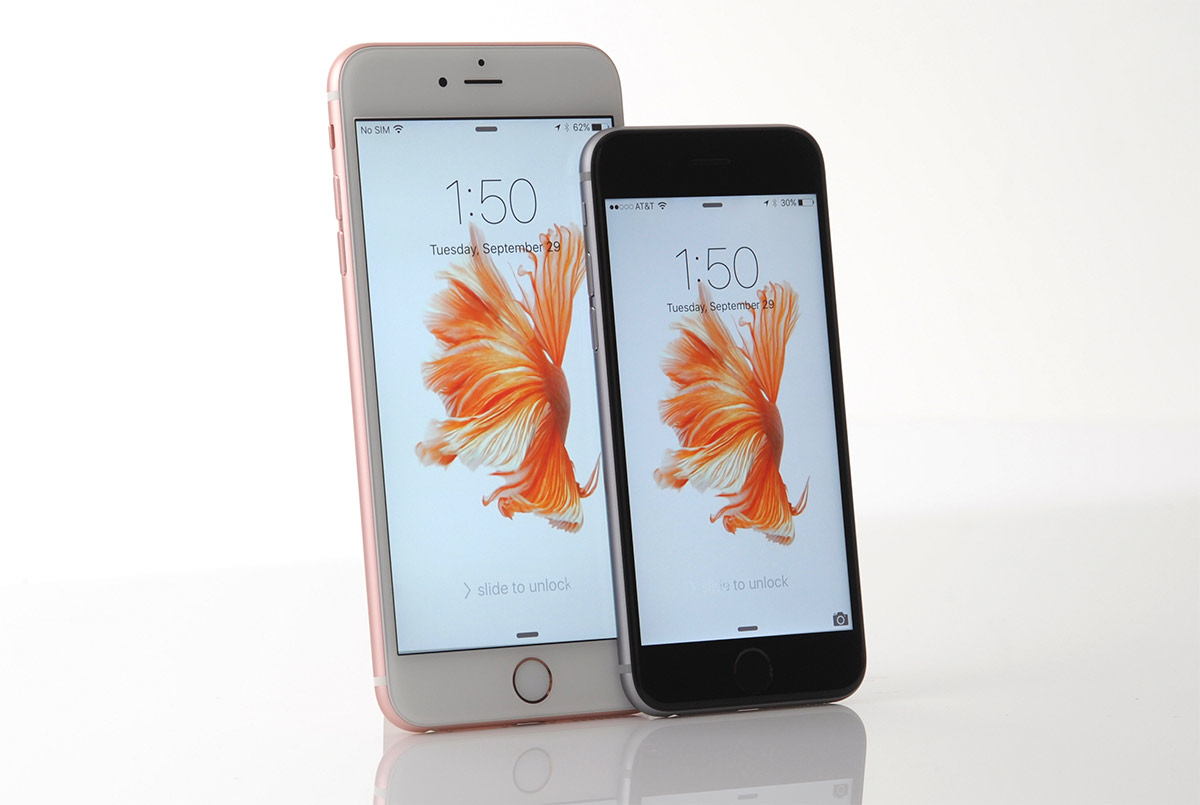iPhone 6S & 6S plus : Review

The ' S ' have always had a reputation of just a minor upgrade or a just refreshed release of the original iPhone. The 'S' awaits in the confusion of , that you to wait for a year or just stay with old.But that trend has changed from quite a while when Apple introduced TouchId to the S series and now this year we have 3D touch , another interesting technology from Apple.We'll that's not all of the added feature in the new iPhone and the question arises , will it be a good upgrade ?
HARDWARE :
No, your eyes don't deceive you: The 6S and 6S Plus look nearly identical to last year's models, save for a new rose gold color option that oscillates between "vaguely lavender" and "shiny new penny" depending on the light. The sleek, rounded aesthetic might not raise as many eyebrows as it did last year, but it's still one of my favorite iPhone designs. Aside from the pink color option, the other changes aren't particularly noticeable. Both phones are now made from 7000-series aluminum, an alloy used in the aerospace industry that, when compared to last year's phones, makes for a sturdier but similarly lightweight design. The regulatory icons that used to live on the iPhone's back have been removed too, leaving a "S" logo to let the world know you've upgraded.

As ever, the Touch ID fingerprint sensor lives in the iPhone's home button, but this year's module is a clear improvement: Apple claims it can pick up your fingerprints up to twice as fast as before. I can't make out exactly what the speed multiple is here, but Touch ID really is blazing fast now, and I can't remember the last time it didn't work on the first try, either.As for the weight, the 6S and 6S Plus do indeed feel noticeably weightier: The 6S weighs in at 143 grams, up from 129, while the bigger 6S Plus now comes in at 192 grams, up from 172.
DISPLAY :
At first glance, you probably wouldn't notice anything different about the IPS screens on the 6S and 6S Plus. After all, they're the same size as before (4.7 inches and 5.5 inches, respectively) with the same pixel density (326 ppi, or 401 ppi on the Plus). The eagle-eyed among you might catch that both screens are a touch brighter with slightly better color reproduction.So it has a got a new Touch 3D feature let's talk about it.

By placing a grid of sensors behind the screen, Apple’s engineers allowed the new iPhone's to sense pressure, enabling a z-axis of gestural input. Put another way, you can right-click now. That’s pretty cool! It’s currently limited to native apps and a few third-party selects, so it’s hard to judge how this will play out. You can’t hate on the effort put into this feature, but nothing that currently uses it really improves the user experience dramatically. Someday it might be a level of interaction you can’t live without.
CAMERA :
For most of us, this is the most important feature of every new iPhone—and phone, period. Each year since launching the iPhone 4, Apple has thoroughly owned all comers. Sure, the occasional Nokia offered optical image stabilization, but the iPhone has always rendered the most natural color, offered great low-light performance, and captured finer detail than its seemingly under powered camera should deliver.

The 6S is no exception. It has a great rear-facing camera: 12 megapixels (up from eight on the iPhone 6), with a protective sapphire crystal lens and super-fast image capturing. It is not, however, the best camera out there. The Moto X and Samsung Galaxy S6 offer more detail. But this makes absolutely no difference until you start zooming in. Aim the camera at what you want to photograph, and you should be fine.Its front-facing camera, however, is The New Boss. At 5 megapixels, and paired with a cool trick that flashes the screen to lighten dark scenes, the 6S will encourage countless degenerates to ruin the ambiance of your favorite romantic location with an extended arm and a pinkish pop
PERFORMANCE :

WRAP UP :
It's easy to say that these are the best iPhone's Apple has ever made, but that's true every year. Like I said before, a device's worth isn't tied directly to a single feature: The important thing is how all of its components and design flourishes and features and interaction elements fit together as a unified whole. The iPhone 6S and 6S Plus nail it -- mostly. They're great phones: well-built, well thought-out and brimming with potential. So, let's cap this off with a little buying advice. If you have an iPhone 5S and are itching to turn it in, now's the time. If you're an iPhone 6 or 6 Plus owner, this is a worthy upgrade, but no one will fault you for waiting another year.That's why the new 6S and 6S Plus (starting at $649 and $749, respectively, for 16GB models)



No comments:
Post a Comment